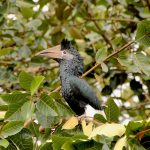The Enigmatic Bat-Eared Foxes of Uganda: Unveiling the Secrets of These Unique Canids
Bat-Eared Foxes in Uganda. Uganda, often celebrated for its diverse ecosystems and rich wildlife, is home to a fascinating array of animal species. Among these, the bat-eared fox (Otocyon megalotis) stands out as a captivating and unique canid species that inhabits certain regions of the country; This article explores the characteristics, behavior, habitat, and conservation status of bat-eared foxes in Uganda, shedding light on these enigmatic creatures.
Description and Characteristics:
The bat-eared fox, distinguishable by its large ears, is a small Canid species native to Africa. In Uganda, these foxes can primarily be found in savannah and grassland habitats. Characterized by a sandy to light grey fur coat, they have a distinctive facial appearance with big eyes and, as the name suggests, disproportionately large ears.
One of the most remarkable features of bat-eared foxes is their dentition. Unlike other canids, these foxes possess specialized teeth adapted for their diet, which primarily consists of insects. Their teeth are small and sharp, allowing them to efficiently consume a diet dominated by termites and other small invertebrates.
Behavior and Social Structure:
Bat-eared foxes are primarily nocturnal, preferring to be active during the cooler night hours. They are highly social animals and often live in family groups, which typically consist of a monogamous pair and their offspring. Within these groups, cooperation in hunting and raising young is observed, contributing to their overall survival.
These canids are meticulous hunters, relying on their keen sense of hearing and acute sense of smell to locate their prey. The majority of their diet consists of termites, though they also consume other insects, small mammals, and fruits when available.
Habitat and Distribution:
In Uganda, bat-eared foxes are commonly found in the savannah and grassland regions, particularly in areas where their preferred prey, termites, are abundant; They are well-adapted to open landscapes and are often associated with areas where they can dig for insects in the soil. They are commonly seen in Kidepo Valley National Park and Pian Upe Game Reserve.
Conservation Status and Threats:
While the bat-eared fox is not currently considered a globally threatened species, localized threats can impact their populations. Habitat loss due to agriculture and human settlement can reduce the availability of suitable foraging grounds. Additionally, the use of pesticides in agricultural practices may pose a risk to their insect prey, affecting the foxes indirectly.
Conservation efforts in Uganda should focus on preserving the natural habitats of bat-eared foxes and raising awareness about the importance of these unique canids in maintaining ecological balance.
Conclusion: – Bat-Eared Foxes in Uganda
The bat-eared foxes of Uganda are captivating creatures that contribute to the rich biodiversity of the region. Their unique adaptations, social behavior, and specialized diet make them a subject of interest for researchers and wildlife enthusiasts alike. As Uganda continues to develop, it is crucial to implement conservation measures that safeguard the habitats of these foxes, ensuring their continued presence in the country’s diverse and vibrant ecosystems.








